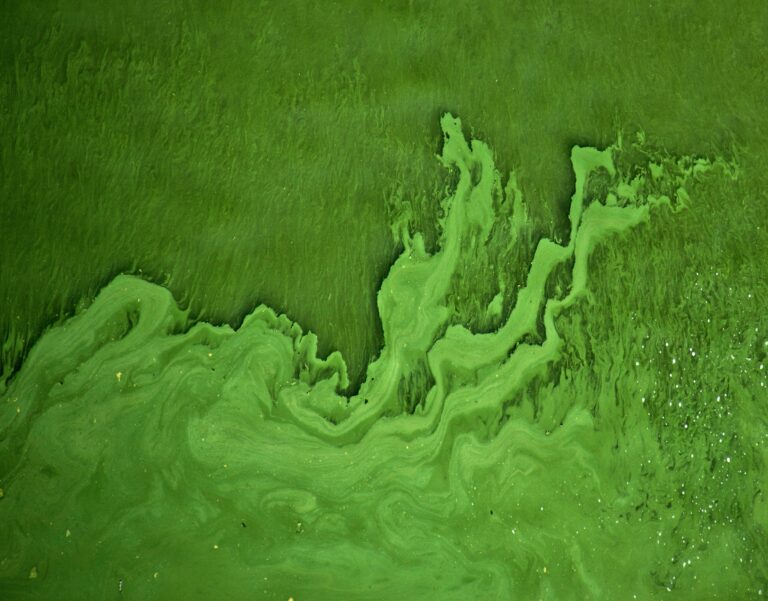Project Description
Lough Neagh is the largest freshwater lake in Britain and Ireland spanning 392 km2. The Lough is economically and ecologically important supplying 40% of Northern Ireland’s drinking water, it is designated for its wildfowl and fish populations, it is Europe’s largest commercial eel fishery, and supports livelihoods in the recreation and tourism sectors vital to the rural economy. There has been a succession of lake-wide cyanobacterial (blue-green algal) blooms in the lake through summer and autumn of 2023. The severity and scale of this bloom are unprecedented in British or Irish freshwaters. Proximal causes are diffuse and include nutrient loading from agricultural runoff and sewage effluent (wastewater) treatment works exacerbated by record-breaking rainfall in July 2023, climate change increasing water temperatures, invasion by non-native zebra mussels (Dreissena polymorpha) affecting the relative abundance and composition of the phytoplankton community, and a lack of regional devolved government to management solutions. Whilst bird and fish mortalities have occurred, the wider ecosystem impacts on the lake community remain unknown. With climate change, it is anticipated that such blooms will increase in frequency and magnitude of impact. Whilst the fish, benthic invertebrates, zoo- and phytoplankton communities of Lough Neagh have been described seperately, an integrated description of the trophic structure of the Lough is lacking.
In this PhD project, you will quantify food web structure taking a trivariate food web approach quantifying body mass, abundance and food web structure, and will quantify the drivers of change in food web structure spatially around Lough Neagh. Importantly, the goal will be to understand how eutrophication has affected food web structure, and consequently, whether this has eroded the resilience of the Lough Neagh ecological community and its capacity to absorb, recover and adapt to perturbations such as climate change or eutrophication. The PhD project will explore the follow questions:
- How does food web structure vary spatially around Lough Neagh and has it changed over time?
- How have ecosystem processes (e.g. decomposition or energy flow) been affected by the impacts of eutrophication or changes in food web structure?
- How do changes in biodiversity affect the inter-relationships between different measures of stability (i.e. resistance, recovery, persistence and variability)?
A combination of field and laboratory based research will generate data describing food web structure and ecosystem functioning along a gradient of eutrophication induced disturbance. A better understanding of how the trophic structure of Lough Neagh has been impacted by a mixture of environmental stressors and perturbations will help to better predict the consequences of future algal blooms or climate induced perturbations. A number of simple perturbation experiments can be used to quantify different measures of stability at locations that vary in environmental stress. In light of climatic anomalies observed this year, e.g. North Atlantic Sea Surface Temperature and the onset of an El Nino event in 2023, algal blooms are also anticipated over the course of the next several years and the bloom may even become an annual event.
CANDIDATE BACKGROUND
There is considerable scope for the PhD student to adapt this project reflecting their skills, expertise and interest. Applicants could have a background in environmental science, ecology, conservation or aquatic biology. Field based skills in sampling aquatic systems are essential as is a full and clean driving license. Numerical and programming skills are desirable, but not essential.
Photo by Mihály Köles on Unsplash
Supervisors
Mark EmmersonPrimary Supervisor: | Profile: Mark Emmerson Email: m.emmerson@qub.ac.uk Institution: Queen's University, Belfast Department/School: School of Biological Sciences |
Lesley LancasterSecondary Supervisor: | Profile: Lesley Lancaster Email: lesleylancaster@abdn.ac.uk Institution: University of Aberdeen Department/School: School of Biological Sciences |
Neil ReidAdditional Supervisor: | Profile: Neil Reid Email: neil.reid@qub.ac.uk Institution: Queen's University, Belfast Department/School: School of Biological Sciences |
References
Woodward, G., et al. (2005) Body size in ecological networks. Trends in Ecology and Evolotion. 20: 402-409. https://doi.org/10.1016/j.tree.2005.04.005.
Donohue, I., et al. (2013) On the dimensionality of ecological stability. Ecology Letters. 16: 421-429. https://doi.org/10.1111/ele.12086
Cohen, J., et al. (2003) Ecological community description using the food web, species abundance, and body size. Proceedings of the National Academy of Sciences. 100: 1781-1786. https://doi.org/10.1073/pnas.232715699
QUADRAT Themes
- biodiversity
- environmental-management
Partners
Collaborators will include:
- Agri-Food and Biosciences Institute






















































